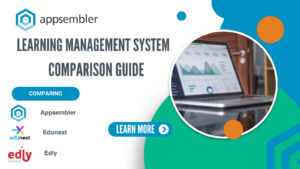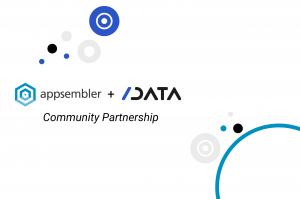In the ever-evolving landscape of business growth, two giants stand tall: Product-Led Growth (PLG) and Sales-Led Growth (SLG). This article delves into the nuances of these strategic leviathans, comparing their strengths, challenges, and ultimate impact on contemporary business paradigms.
Key Takeaways:
- PLG vs. SLG: While PLG leverages the product itself as the primary growth driver, SLG emphasizes sales-driven interactions and engagements.
- Characteristics: PLG thrives on user experience and organic growth; SLG on personalized sales approaches tailored to potential client needs.
- Benefits & Challenges: PLG often results in higher user adoption rates and organic referrals, but may face scalability issues. SLG can target high-value contracts with precision, yet may struggle with longer sales cycles.
- Comparative Analysis: Each model’s growth trajectories, customer acquisition strategies, and financial implications differ, offering unique advantages.
- Choosing the Right Strategy: The decision between PLG and SLG rests on product-market fit, resources, customer behavior, and the flexibility to pivot as required.
Table of contents
Introduction
In today’s rapidly evolving business landscape, the routes to expansion are no longer one-dimensional. Among these pathways, two stand out as frontrunners: product-led growth (PLG) and sales-led growth (SLG). At first glance, they might seem like mere buzzwords, but in the nuanced world of business expansion, these strategies determine the pacing, direction, and ultimately, the success of a company’s growth.
Product-led growth champions the product itself as the main driver. Imagine a world where the products are so intuitive, essential, and user-friendly that they essentially market themselves. Customers become loyal enthusiasts not because of persuasive sales pitches, but due to the sheer value and experience the product provides.
Conversely, sales-led growth hinges on a powerhouse sales team, equipped with resources, tactics, and the ability to communicate value. It’s a tried and tested method where personalized outreach and the human touch dominate, converting prospective leads into customers.
The question that remains for modern businesses is not just about which route to choose, but understanding the core of each approach and aligning it with their identity and goals. As we delve deeper, let’s navigate the intricate realms of PLG and SLG, uncovering their potentials and pitfalls, and helping you make an informed choice for your enterprise’s growth trajectory.
In the bustling intersection of products and growth, there emerges a strategy that’s reshaping how modern businesses think about scaling: Product-Led Growth or PLG.
Understanding Product-Led Growth (PLG)
Definition – What is product-led growth?
Product-led growth is a go-to-market strategy where the product stands at the epicenter of a company’s growth efforts. Rather than traditional marketing or sales efforts driving initial customer acquisition, it’s the product’s inherent value and user experience that pulls users in and encourages expansion. It’s the world where your Slack channels, Dropbox folders, or Zoom meetings became indispensable not because of a flashy ad, but due to the solutions they provided.
Key Characteristics – Features of companies that follow PLG:
- User-Centricity: PLG companies often offer freemium versions or trials, prioritizing user experience from the very first interaction.
- Viral Potential: The product’s value often encourages organic sharing. Think of how a Google Docs invite can pull a new user into its ecosystem.
- Data-Driven: With a product-focus, these companies thrive on user data to continually refine and enhance their offerings.
- Bottom-Up Adoption: PLG products often find footing with individual team members or departments before scaling across an organization.
Benefits of PLG – Advantages of adopting a product-led approach:
- Reduced Customer Acquisition Costs: By relying on the product to attract users, businesses can often bypass hefty sales and marketing expenses.
- Increased Product Adoption: When users experience value firsthand, they’re more likely to integrate the product into their daily workflows.
- Authentic Growth: Growth driven by genuine user satisfaction tends to be more sustainable and resistant to market fluctuations.
Potential Drawbacks – Challenges to be aware of when implementing PLG:
- Delayed Monetization: With freemium models, immediate revenue isn’t guaranteed, and there’s a reliance on long-term user conversion.
- Intense Competition: The digital landscape is saturated with tools and platforms. Standing out solely based on product can be challenging.
- Scaling Concerns: As user bases grow, maintaining the same level of product excellence and user support can become daunting.
While the allure of PLG is undeniable, it’s essential to weigh its merits against its challenges, ensuring it aligns with the broader vision and capabilities of your enterprise.
Understanding Sales-Led Growth (SLG)
Amidst the panorama of business strategies, Sales-Led Growth (SLG) stands as a testament to the timeless power of human interaction. While the modern world may be enthralled by products that sell themselves, the dynamism of a skilled sales force remains an irreplaceable asset for countless enterprises.
Definition – What is sales-led growth?
Sales-Led Growth pivots around the strategy of harnessing a robust sales team to drive customer acquisition, revenue, and company expansion. Here, personal touchpoints, tailored pitches, and relationships take center stage, converting potential leads into loyal customers.
Key Characteristics – Features of companies that follow SLG:
- Personal Touch: Relationships are paramount. Businesses invest in training elite sales teams adept at forging genuine connections with clients.
- Targeted Outreach: SLG businesses typically engage in meticulous market research to identify and reach out to their ideal customer profiles.
- High-Ticket Deals: With personalized selling, there’s a higher likelihood of securing larger contracts and enterprise deals.
- Staged Conversions: The sales process often involves multiple stages, from initial contact to nurturing, and finally closing the deal.
Benefits of SLG – Advantages of a sales-driven model:
- Precision Targeting: Tailored outreach means a higher probability of reaching individuals or businesses that are a perfect fit for the product or service.
- Higher Lifetime Value: Personal connections can lead to prolonged customer relationships, often resulting in upsells, cross-sells, and referrals.
- Immediate Feedback: Direct interactions with customers provide immediate insights, allowing for rapid product or service adjustments.
Potential Drawbacks – What companies should watch out for:
- Higher Initial Costs: Maintaining a skilled sales team, with training and resources, can be capital-intensive.
- Longer Sales Cycles: Personalized selling might require prolonged nurturing, which can delay deal closures.
- Market Saturation: In sectors where multiple businesses employ aggressive sales strategies, standing out becomes a challenge.
- Dependence on Personnel: If key salespeople leave, there’s potential risk, given the relationships and expertise they carry.
In the cosmic dance of growth strategies, Sales-Led Growth is the ballet of human connection. It’s the art of understanding, the science of persuasion, and the strategy of commitment. As businesses sift through the digital age’s myriad avenues, the value of a handshake, a call, or a meeting – the quintessence of SLG – continues to be a powerful growth propellant.
Comparative Analysis: PLG vs. SLG
In the kaleidoscope of business growth strategies, two hues shine particularly bright – the vibrant red of Product-Led Growth (PLG) and the deep blue of Sales-Led Growth (SLG). As distinct as they are, both have carved out notable successes in the corporate tapestry. Let’s lay them side by side and examine their unique and shared traits, shedding light on their potential impact on business growth.
Product Focus vs. Sales Focus – Delineating the central focus of each strategy:
- PLG: At its heart, PLG is all about the product. The belief is that if you build a stellar, user-centric product, it will draw users to it organically. The product is both the magnet and the ambassador, representing the brand and its value proposition.
- SLG: In the SLG realm, the sales team is the vanguard. It’s not just about selling; it’s about forging relationships, understanding customer needs, and positioning the product or service as the solution. Here, the power of human connection and persuasion is leveraged to the fullest.
Customer Acquisition – How both models approach new customers:
- PLG: Customer acquisition in PLG often starts with a user experiencing the product firsthand – be it through a free trial, a freemium version, or word-of-mouth recommendation. The product’s quality and usability are its primary selling points.
- SLG: This strategy relies on targeted outreach. Sales teams identify potential leads, reach out, nurture these relationships, and eventually convert these leads into paying customers. Every stage is curated, personalized, and often intensive.
Scaling and Sustainability – Assessing growth trajectories:
- PLG: Scalability is a significant advantage here. A well-received product can quickly gain traction and spread, especially in today’s digital age. However, sustainability requires continuous product refinement based on user feedback and market trends.
- SLG: While sales-led strategies can also scale, the rate is often tethered to the size and efficiency of the sales team. It’s sustainable as long as there’s a steady stream of leads and a team capable of converting them. However, rapid scaling may necessitate aggressive team expansion.
Costs and ROI – Analyzing the financial implications of each strategy:
- PLG: Initial costs might be high, especially in product development and refining the user experience. However, if the product gains organic traction, customer acquisition costs could plummet. The ROI can be substantial, especially if the product experiences virality.
- SLG: The immediate costs include maintaining a proficient sales team, tools, and resources for outreach, and continuous training. The ROI is predictable and can be substantial, especially when the sales team clinches high-ticket deals or long-term contracts.
In the grand theatre of business growth, neither PLG nor SLG holds the monopoly on success. Their efficacy is contextual, influenced by factors like the industry, target audience, and the very nature of the product or service on offer. By understanding their nuances, businesses can choreograph their growth symphony, harmonizing the best of both worlds.
Determining the Right Strategy for Your Business
Navigating the intricate crossroads of Product-Led Growth (PLG) and Sales-Led Growth (SLG) can feel like mastering a profound art form. Each approach, with its distinctive rhythm and resonance, can steer businesses towards unparalleled successes. Yet, the crescendo of this symphony lies in discerning which strategy strikes the right chord for your enterprise. Let’s embark on this introspective journey.
Evaluating Your Product and Market – How to assess product-market fit:
The crux of your strategy lies in the marriage between your product and its intended audience.
- PLG: If your product addresses a universal pain point and is intuitive enough for users to onboard without extensive hand-holding, a product-led strategy might be your north star. The app universe, replete with tools like Calendly or Trello, exemplifies this.
- SLG: For niche products or services, especially those catering to specialized industries or requiring deeper customer education, a sales-led approach can shine. It provides the canvas for detailed pitches and personalized demonstrations.
Resources and Expertise – Considering your company’s strengths:
Your organizational arsenal can heavily influence your strategic inclination.
- PLG: Do you have a stellar product team, UX designers, and data analysts in tow? Their combined expertise can shape a formidable product-led strategy, emphasizing user experience and iterative refinement.
- SLG: If your enterprise boasts a charismatic sales team, seasoned in cultivating relationships and adept at translating needs into solutions, a sales-led narrative could be your ballad.
Customer Behavior and Expectations – Recognizing what your customers want:
Interpreting the hieroglyphics of customer behavior can steer your strategic compass.
- PLG: Modern consumers, especially in the B2C landscape, cherish self-exploration. They’re inclined to experiment with products before making purchase commitments. If your audience resonates with this ethos, PLG beckons.
- SLG: In contrast, B2B clientele or those seeking bespoke solutions often value guided journeys, consultations, and tailored propositions. Here, the sales-led model thrives.
Pivot Potential – Switching between strategies when necessary:
The realm of business is fluid, and rigidity can be its nemesis. Recognizing when to pivot is as crucial as choosing an initial strategy.
- PLG to SLG: Perhaps you initiated with a product-centric approach but now find a segment of high-value clients seeking personalized interactions. Transitioning to an SLG model for this subset could be golden.
- SLG to PLG: Alternatively, if your sales team’s efforts are vast but conversions seem bottlenecked, introducing a freemium product version can ignite organic growth, letting the product’s prowess speak.
In the ballet of business strategies, there’s no one-size-fits-all. The magic unfolds when you, with introspection and agility, choreograph a dance that’s uniquely yours, harmonizing the product’s allure and the sales narrative’s charm. So, let your business’s soul guide its strategy, and watch it waltz to success.
Appsembler’s Role in Growth Strategies
Amidst the fervor of strategic growth narratives—where the allure of products and the charm of sales tactics constantly vie for dominance—stands a titan: Appsembler. This platform, with its multipronged approach, wields the power to bolster both Product-Led and Sales-Led Growth. Let’s dive deep into the realm of Appsembler.
What is Appsembler?
Appsembler is not just a tool—it’s a paradigm shift. It’s a platform designed to amplify the potential of businesses by offering a suite of features tailored to enhance user experience and streamline sales processes. With its robust functionalities, Appsembler positions itself as the backbone for enterprises aiming to achieve a seamless fusion of product and sales strategies.
How Appsembler Supports PLG and SLG – Features and tools that can assist businesses:
For the PLG enthusiasts, Appsembler rolls out intuitive interfaces and user-centric designs that accentuate product value, ensuring organic user acquisition and retention. Its analytics feature provides insights into user behavior, empowering businesses to continually refine their offerings.
On the flip side, sales aficionados find solace in Appsembler’s CRM integrations and lead tracking systems. It crafts a symphony of personalized outreach, ensuring sales teams have real-time data, enabling them to tailor pitches perfectly and seal deals efficiently.
Success Stories – Real-world examples of businesses leveraging Appsembler:
One of the many tales of triumph includes REDIS, who on embracing Appsembler, saw a 200% uptick in user engagement within months. Appsembler became more resonant, and their sales cycle more streamlined. Chef Software, initially struggling with lead conversion, harnessed Appsembler’s tools to customize outreach. The result? A 150% surge in conversions within a quarter.
Appsembler, in essence, is the maestro orchestrating the dance between PLG and SLG. It doesn’t just support these strategies—it amplifies them, crafting a tale where product allure and sales charisma coalesce into unparalleled growth.
Conclusion
In the grand tapestry of business growth, choosing between Product-Led Growth and Sales-Led Growth is not a mere fork in the road—it’s an art. The palette boasts of PLG’s user-centric brilliance juxtaposed against SLG’s captivating sales narratives. But remember, the masterpiece isn’t about choosing one over the other. It’s about understanding your unique narrative, your audience’s aspirations, and then blending these hues with masterful strokes. So, as you stand poised with brush in hand, ask yourself: Which colors will bring your business canvas to life? Dive deep, evaluate, and let your strategy be the beacon guiding your enterprise to its renaissance.
FAQs
Product-Led Growth (PLG) is a go-to-market strategy where the product itself serves as the main vehicle for growth. Instead of relying heavily on sales teams or marketing efforts, businesses using PLG focus on creating a stellar product experience to drive user acquisition, conversion, and expansion.
Sales-Led Growth (SLG) places emphasis on sales teams to drive company growth. In this model, dedicated sales professionals engage with potential customers, identify their needs, and provide tailored solutions. The product, while important, is often demonstrated and tailored based on these sales interactions.
Absolutely! While PLG and SLG are distinct strategies, they aren’t mutually exclusive. Many companies find a harmonious blend, using the product itself to attract a broad user base and then employing a sales team to engage with high-value prospects or specific market segments.
Typically, SaaS companies or businesses with digital products benefit immensely from PLG. This is especially true when their product addresses a broad market need and offers a user-friendly experience that allows users to see immediate value.
Yes, industries with complex solutions, high-value contracts, or B2B enterprises with niche offerings often lean towards SLG. This approach allows for a deeper understanding of client needs and customization of the product or service offering.
Appsembler acts as a versatile tool designed to enhance both PLG and SLG strategies. With features tailored to boost user experience and streamline sales processes, Appsembler stands as a cornerstone for businesses aiming to seamlessly integrate product and sales strategies.



